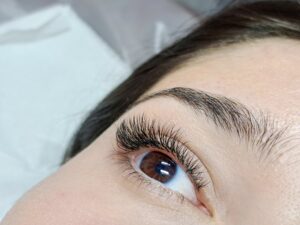Botox For Migraines, is it really possible? Migraine is the third most prevalent illness known to man and 12% of the population suffers from it, including children. This neurological disease presents incapacitating symptoms, such as severe pain, usually on one side of the head, which has proven to be very debilitating.
Believe it or not, Botox offers a solution to migraines and it is effective in reducing the frequency of chronic migraines. Botox is a kind of botulinum neurotoxin, which is a protein that comes from the bacterium Clostridium botulinum.
Originally, the toxin was responsible for botulism, but today, it is used for many different medical conditions, including excessive sweating, muscle spasms, eye muscle conditions, and overactive bladders. Today, we will focus on Botox as a preventive treatment for chronic migraines and how it can provide relief.
Is Botox Effective Against Migraines?
Studies have shown that Botox treatment for migraines greatly reduces the number of days people suffer from headaches. So, yes, Botox is effective at reducing migraine headaches and this is because it blocks the neurotransmitters that carry pain signals to the brain. Botox prevents these chemicals from getting to the nerve endings around the head and neck, thus reducing the number of headaches.
Is Botox FDA-Approved?
Yes, the FDA has approved the use of Botox for the treatment of chronic migraines. The baseline is 15 or more headache days per month, so the more frequent the headaches are, the better the results.
What Is Botox for Migraines Like?
The first sessions will take around 20 minutes, where your doctor will inject small amounts of the product into your skin’s shallow muscles. Each treatment consists of 31 injections in key areas around the head and neck, including the forehead, temples, back of the head, upper back, and more. You will experience the maximum benefits in around 6 months, but in the meantime, you will be able to take your medications without any risk.
When Did Botox Become a Treatment for Migraines?
Botox was introduced as a treatment for chronic migraines back in 2000. People who got Botox injections for cosmetic reasons reported that their headaches had improved so that lead to studies.
Though the first few studies provided conflicting results, in 2010, two large studies provided enough evidence of the benefits of Botox for the treatment of migraines, and soon after it was approved by the FDA.
The treatment effectively reduces the severity and frequency of the headaches, but it’s important to keep in mind it doesn’t change the underlying condition. However, it provides people with more relief than other available treatments.
Are There Any Risks to Using Botox to Treat Migraines?
In theory, the spread of the Botox from the site of the injection to other areas of the body can lead to muscle weakness or paralysis. This is why doctors avoid using Botox on people who have muscle weakness conditions of any kind. In practice, you will be happy to know those bad reactions or side effects are rare.
Botox injections are reported to cause some irritation, temporary drooping of the eyelid, and it alters facial expressions, which is why it’s used to treat wrinkles and lines of expression.
These common side effects can be avoided by moving the injections to different locations in the next session. Botox treatment is not invasive and you can go back to work or get through the rest of your day after a session without any issues.
Who Is Botox Treatment For?
Ever since Botox was introduced as a treatment for migraine headaches, it has become a common treatment, especially in cases where standard alternatives don’t prove to be effective. Botox can help these patients feel better and become a lot more productive in their daily lives.
Botox treatment for migraine headaches is often covered by health insurance policies, which is great. It’s a good option for anyone who has 15 days of migraine headaches per month, as stated by the FDA.
People who have 14 or fewer headache days per month won’t be able to benefit from this treatment. Though it’s sometimes used for other forms of chronic headache, that’s outside of FDA approval since this treatment is only approved for chronic migraine.
Where Does Botox Fit Among Other Migraine Treatments?
People who suffer from migraines benefit from a comprehensive management plan that consists of a healthy lifestyle, the avoidance of triggers as much as possible, and the use of over-the-counter medication and prescription abortive medication as necessary, which is meant to stop a migraine that’s already happening.
The standard treatment of chronic migraine includes daily preventive medications that are prescribed by a doctor and they can work on their own or in combination with Botox. However, it’s important to note that this preventive medication is often the first option.
One of the disadvantages of Botox is that the patient needs to get the injections every three months so the effects can be maintained. Not to mention that Botox treatment doesn’t mean you can ditch your prescription medication. In fact, it’s recommended that you continue taking them to enjoy the best possible results.
Remember, Botox reduces the frequency and intensity of migraines, so prescription medication is still useful and it adds to the effects of the Botox treatment. As you can imagine, Botox has become a common option in headache centers all over the US because they are beneficial and safe for long-term treatment.
How Can I Access Botox for Migraines?
Botox treatment for migraine is only available via NHS for those who suffer from this condition and have already tried at least three different preventive treatments without any success. The treatment is provided by specialists, such as consultant neurologists or headache specialists.
They will go through your medical history and assess your symptoms to make sure this treatment is the most appropriate option or if there’s another treatment option you should try before, just to rule everything out. It’s their job to make sure Botox is the right option, so make sure to follow recommendations.
*Information in this article is not medical advice and may not be factually accurate. It is intended for entertainment purposes only. Consult with a physician before attempting any tips in this blog post and to get the most up to date factual data about any procedure or treatment.














